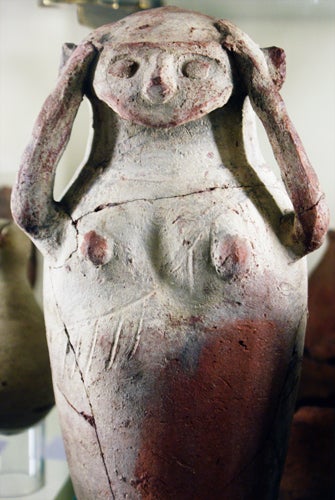Alternative sexuality in ancient Egypt? Follow the LGBT Trail at the Petrie Museum

Your support helps us to tell the story
From reproductive rights to climate change to Big Tech, The Independent is on the ground when the story is developing. Whether it's investigating the financials of Elon Musk's pro-Trump PAC or producing our latest documentary, 'The A Word', which shines a light on the American women fighting for reproductive rights, we know how important it is to parse out the facts from the messaging.
At such a critical moment in US history, we need reporters on the ground. Your donation allows us to keep sending journalists to speak to both sides of the story.
The Independent is trusted by Americans across the entire political spectrum. And unlike many other quality news outlets, we choose not to lock Americans out of our reporting and analysis with paywalls. We believe quality journalism should be available to everyone, paid for by those who can afford it.
Your support makes all the difference.Learning about 'alternative' sexualities through time is often a murky business, beset with the prejudices and right-leaning morals of almost every culture in history. And when you're looking as far back as ancient Egypt, the task becomes infinitely harder. This makes the Petrie Museum's latest endeavour all the more impressive, as it falls in line with LGBT (Lesbian, Gay, Bisexual and Transgender) Month, a UK-wide event running throughout February.
Like lesbian or gay history in general, you'll have to do more than scratch at the museum's surface to get a sniff of alternative sexualities in Egypt. 'Beyond Isis and Osiris: Alternative Sexualities in Ancient Egypt' is a recondite retrospective of gay and lesbian life, shown via 14 artefacts. Organiser John J. Johnson is hardly surprised at the lack of conspicuous gay iconography millennia ago: "That there is an 'official' somewhat censorious attitude towards homosexual acts in Pharaonic Egyptian culture is difficult to deny...The twenty-seventh declaration of the Book of the Dead is a confirmation by the deceased that he did not have homosexual relations."
Yet Mr Johnson argues that this suppression proves homosexual activity occured in ancient Egypt - and there is no lack of museum evidence to back his claim. A stela of Akhenaten and his wife Nefertiti shows the heretic king in a wholly effeminate light, suggesting some sort of hermaphroditic aspect to his heretic worship of Aten, the sun-disk. The Tale of Horus and Seth, a papyrus fragment, describes how the two gods "lay down together. At night, Seth let his member become stiff and he inserted it between the thighs of Horus..."
The Classical Period is also explored in the trail, including the alleged romance of Alexander the Great and Hephaestion. Emperor Hadrian, one of Rome's greatest leaders, was supposedly embroiled in a love affair with a young man called Antinous: a bronze coin of the former and marble statue of the latter prove handy insights into the tale.
The trail is part of a wider series of events and lectures run by University College London this month, which has already featured Andrew Lear's fascinating views on Greek pederasty. And Mr Johnson claims the Petrie Museum is the perfect venue for such a trail, as "Sir William Matthew Flinders Petrie was particularly keen, in his excavation of settlement areas, to reveal the truth of the ancient Egyptians' day-to-day lives rather than uncovering the art treasures and funerary artefacts sought by his contemporaries." Catch the LGBT Trail throughout February.
Join our commenting forum
Join thought-provoking conversations, follow other Independent readers and see their replies
Comments